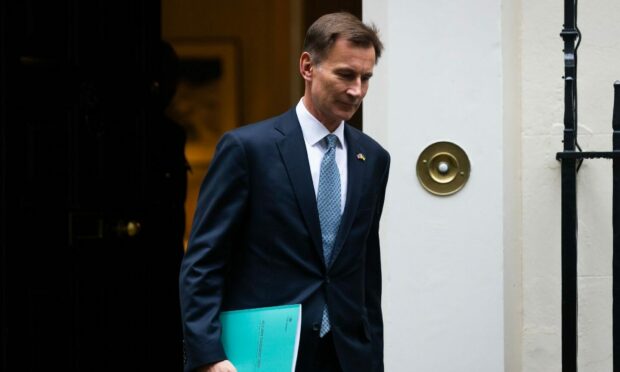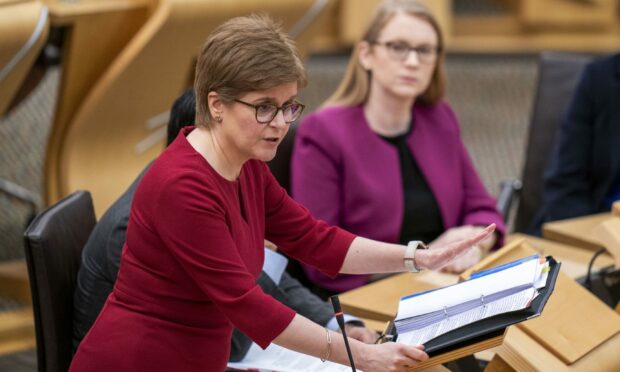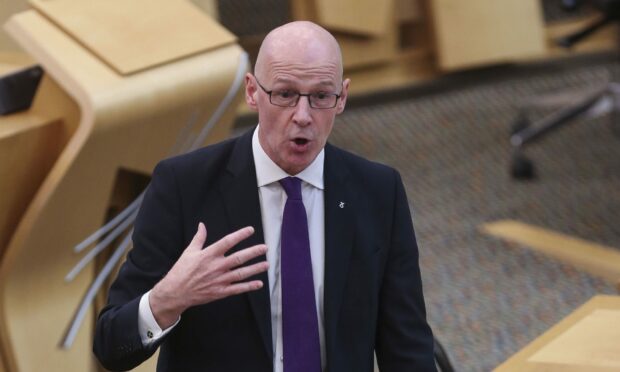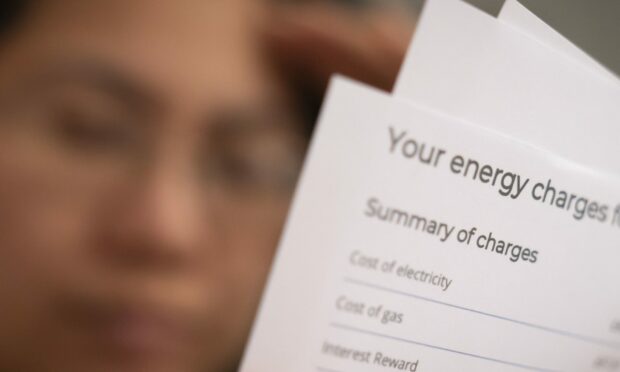Disposable income is forecast to drop over the next two years in the biggest fall since 1956, hitting households already dealing with a cost of living crisis.
The UK Government’s forecaster spelled out the 7% dip as Chancellor Jeremy Hunt set out a £54 billion package of cuts and tax rises on Thursday.
Mr Hunt’s “autumn statement” was the Conservative government’s attempt to fix the chaos of his predecessor’s mini-budget unleashed on the UK economy in September.
First Minister Nicola Sturgeon said the UK Government appeared to be ushering in a return to austerity.
John Swinney, the acting finance secretary in the Scottish Government, claimed he has had “no choice” but to make savings of more than £1bn.
What do tax changes mean for Scots?
Mr Hunt unveiled a package of £30 billion worth of spending cuts and £24bn in tax rises over the next five years to plug a £54 billion black hole.
Scots will be hit by a stealth tax with the decision to freeze the National Insurance threshold for two more years, from April 2026 to April 2028.
This will result in more people paying more tax as wages increase. Scots currently pay 12% in contributions on earnings above £12,570.
Many of the changes will not apply to taxpayers in Scotland where powers over bands are devolved to Holyrood.
This includes a move to reduce the threshold at which the 45p top rate of income tax is paid from £150,000 to £125,140.
Different rates already apply in Scotland where there is a top rate of 46% on earnings over £150,000.
It leaves Mr Swinney with a decision on whether to follow suit when he lays out the Scottish Government’s budget on December 15
Cost of living crisis worsens
Increased energy bills are hurting households across the UK.
The chancellor confirmed the energy price guarantee will continue for a further 12 months from April next year until March 2024.
However, it will rise from the current £2,500 to £3,000 per year for the average household, with millions facing bigger bills.
What is the energy price guarantee?
The guarantee caps the amount suppliers can charge for each unit of electricity and gas you use, as well as the standing charges.
However, this is based on usage and is not an absolute cap, so the £3,000 figure from April, is based on what a ‘typical’ household would pay over a year.
This will coincide with the £67 monthly payments that make up the government’s £400 rebate to all households to offset higher energy bills ending from March.
Mr Hunt also announced additional cost-of-living payments next year for the “most vulnerable”.
These payments will be made on a UK-wide basis:
- An extra £900 payment in 2023-24 for households on means-tested benefits.
- An extra £300 payment in 2023-24 for pensioner households.
- An extra £150 disability payment in 2023-24.
Households who use alternative fuels such as heating oil and LPG to heat their homes will see their support double from £100 to £200.
Mr Hunt says this would be delivered as soon as possible this winter.
Benefits will also increase in line with inflation and will rise by 10.1%.
This includes increasing the state pension by inflation, in line with the commitment to the Triple Lock.
Some disability benefits are devolved in Scotland, so it is again up to Mr Swinney to decide whether these also rise.
The National Living Wage will be increased by 9.7% to £10.42 an hour, giving a full-time worker a pay rise of over £1,600 a year, benefitting 2 million of the lowest paid workers.
A windfall tax on energy firms
North Sea oil and gas firms have been hit by a total £54 billion windfall tax by the UK Government.
In May last year, while chancellor, Rishi Sunak introduced a 25% levy on the profits of oil and gas companies.
Mr Hunt has gone further and increased the rate from 25% to 35% and extended the scheme from 2025 until 2028.
The energy profits levy (windfall tax) rate is rising, & will be put on electricity generators to raise £14bn
(Which is roughly what it'd cost if the energy price guarantee were to carry on and be set at the 20% higher rate than currently – watch this space)#AutumnStatement— Martin Lewis (@MartinSLewis) November 17, 2022
The tax will be expanded to electricity generators with a levy of 45% being applied from January 1 – expected to raise £14.2bn by 2028.
The chancellor said he supports a windfall tax but “any such tax should be temporary, not deter investment, and recognise the cyclical nature of energy business”.
Oil and gas firms have warned it risks “driving investment out of the UK altogether”.
Mr Hunt left a sweetener in place by offering fresh incentives for offshore electrification – offering a boost for those seeking to decarbonise and electrify offshore platforms.
Alison Thewliss, the SNP’s economy spokesperson at Westminster, said the chancellor should have expanded to “companies making excess profits”.



